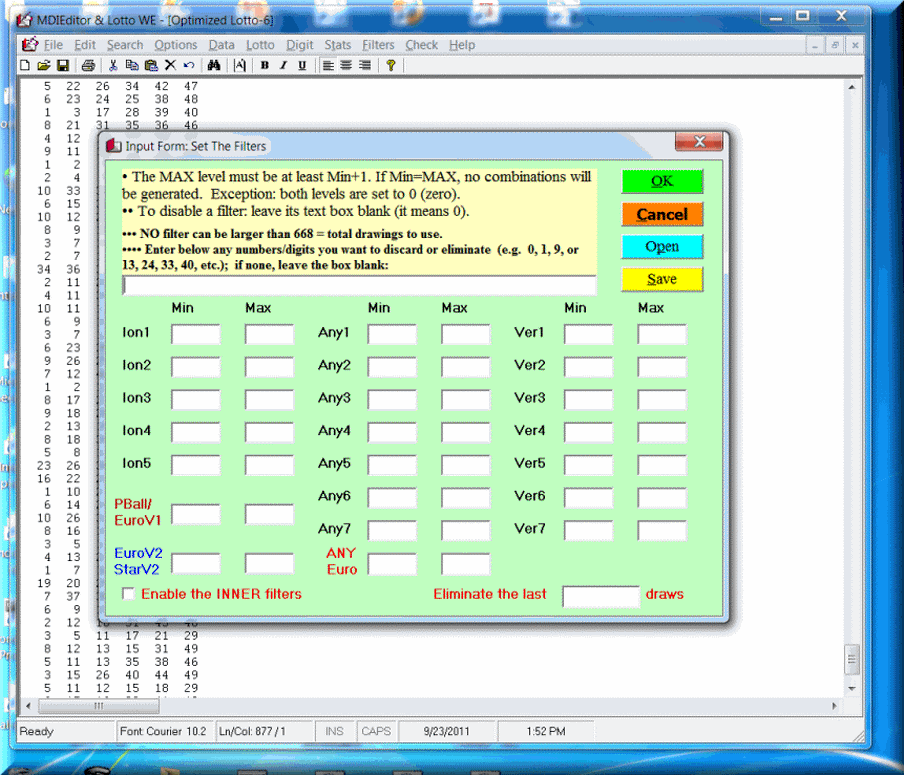


Posted by DEZ on July 14, 2001.
In Reply to: 5% Frequency: The lowest lotto number in a lottery drawing is OVER 19 posted by DEZ on July 12, 2001.
: Ion had mentioned in his response (that he has since deleted), that at times a drawings last number will be 19 lotto numbers below the maximum possible (e.g. in Illinois lotto there are 52 lotto balls, and at times the last number in a draw will be = 33). I looked at it from that angle, and had interesting results. In the last 360+ drawings in Illinois lottery, 17 times the sum of the winning combination was 100. Of those times, within a skip of 4, the last lotto number in a winning combination was under 33. That is a tremendous improvement from trying to find a trigger on the low side (i.e. when the lowest number in a lotto drawing is under 20.
Analysis of "The best software to win the lottery, including pick 3 4, pick-3, entirely based on mathematics, theory of probability, theory of games - Fundamental Formula of Gambling." The drawback though is I have a small sample size. Although I am using over 360 lottery drawings, I am not sure that it is enough to concretely say that whenever the sum of a draw is 100, almost 50% of the time a drawing will occur within a skip of 4 where the highest lotto number is under 33.
This is where I need help. If people from other states would run the same test on their lotto, we could combine the info and be able to make a valid determination. If you want to participate, be aware that Illinois lottery uses 52 lotto balls. If you are in a state that uses less, you need to compensate for that with regard to the sums. The median sum will be lower in those states. Ion would know much better than me, but I think if you reduce the sum by 5 for each ball, that should put us in the ballpark. In other words, if your lotto has 50 balls, I think you should use a sum of 90 instead of 100. Looks similar to the famous lotto strategy based on birthday numbers (under 31).
Ion, axiomatic one, PLEASE advise if that is a correct assumption.

Follow Ups:

Comments:

